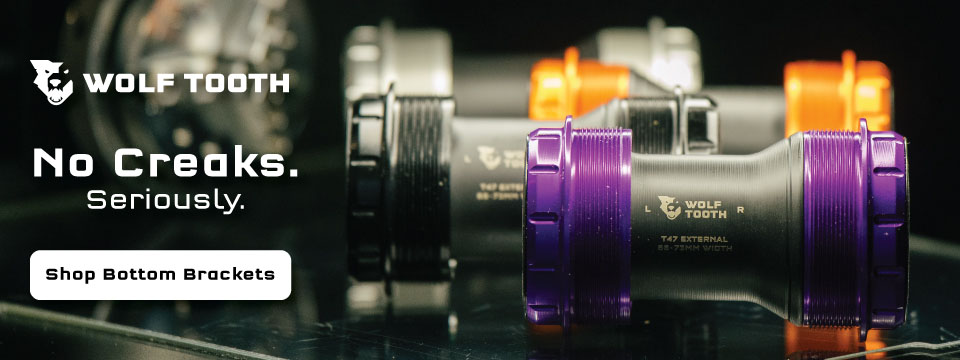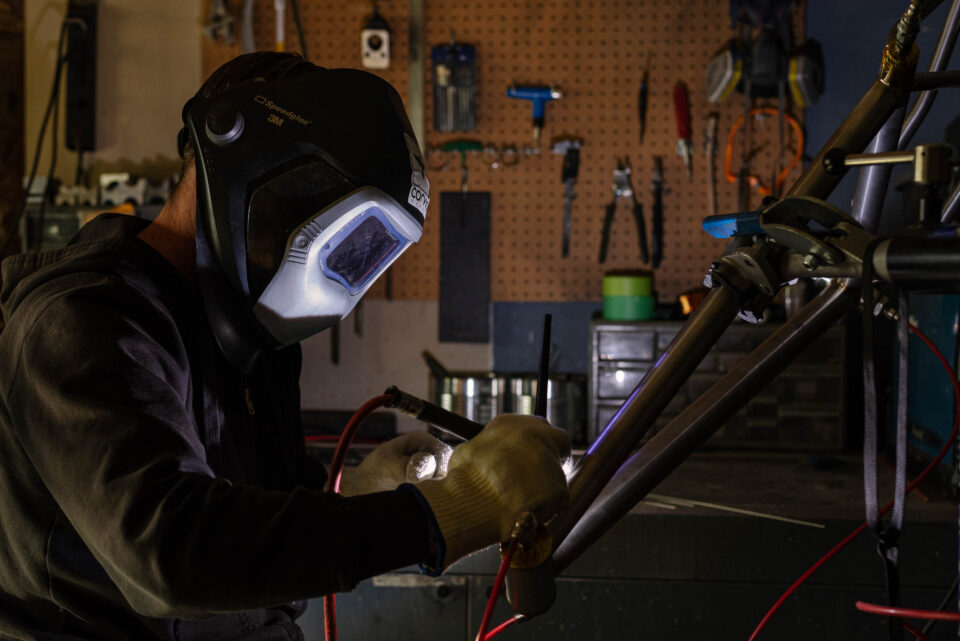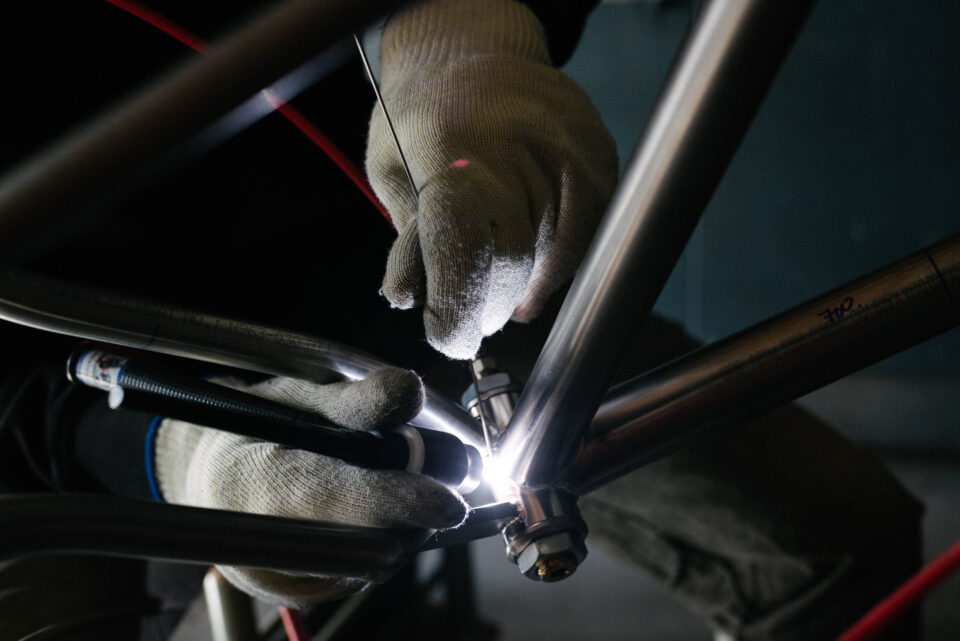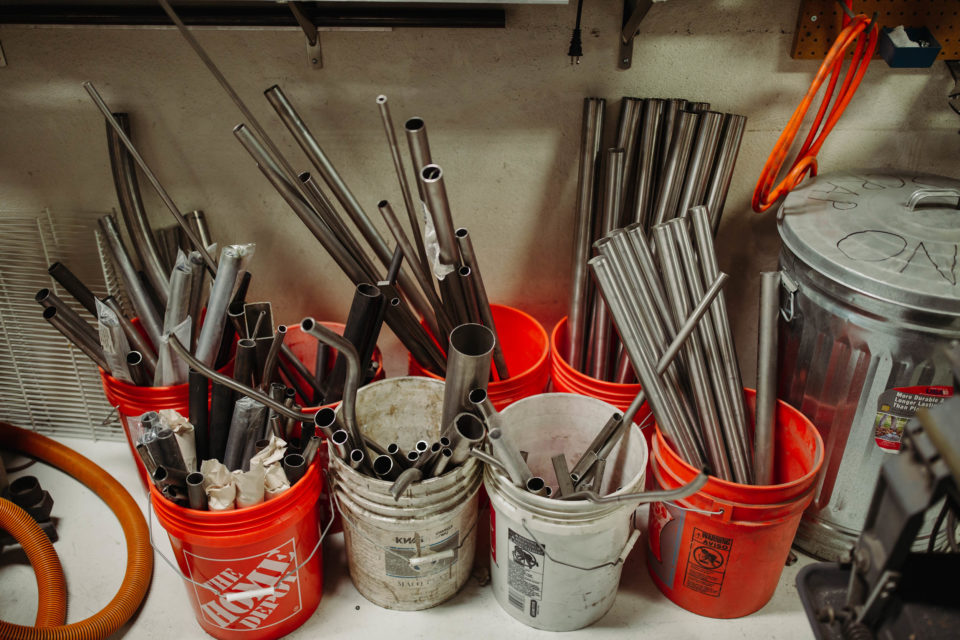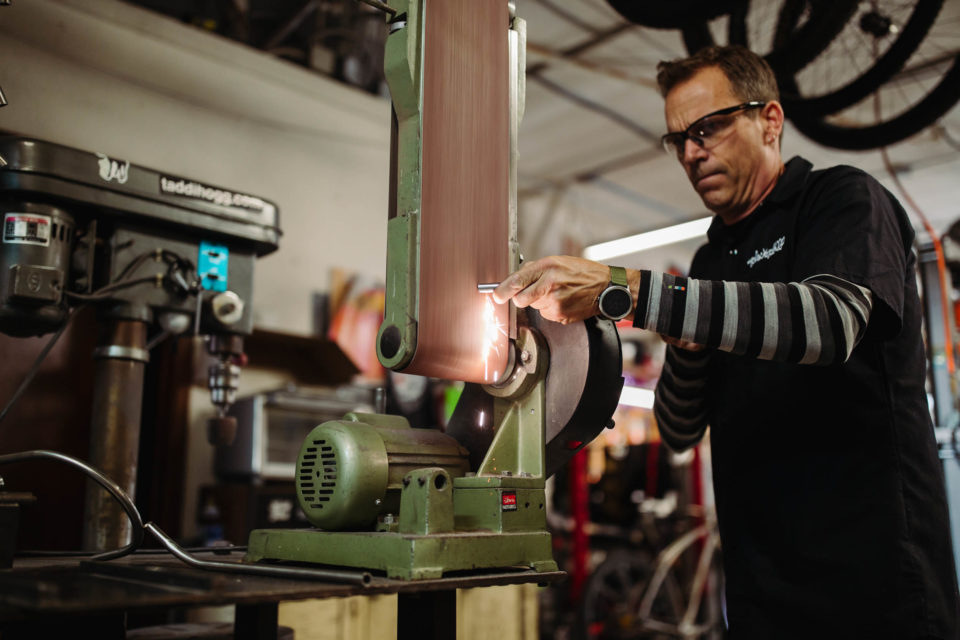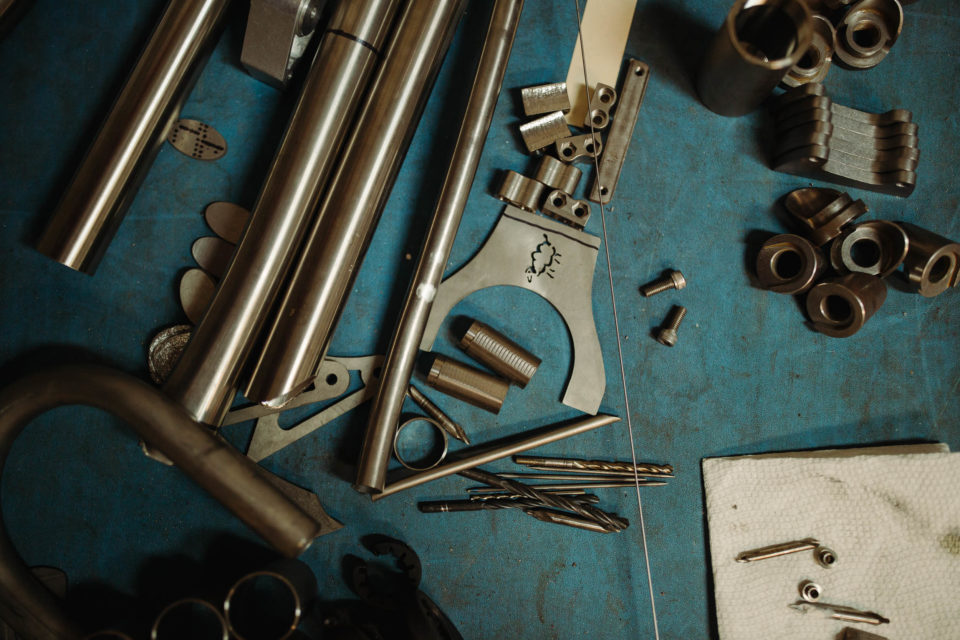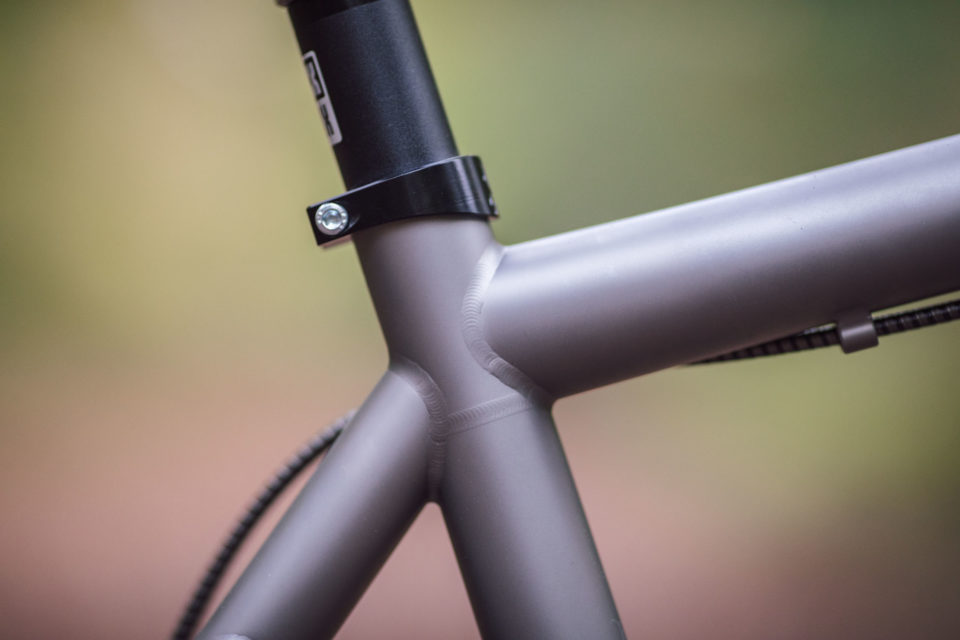What’s So Alluring About Titanium Bikes?
As a material for bicycle frames, titanium has achieved an almost mythical status. But what makes it so broadly appealing and highly regarded among cyclists? In this piece, Lucas attempts to unpack some of titanium’s mystique and invites you to add your perspective to the conversation. Read it here…
PUBLISHED Aug 1, 2024
Over the years, I’ve ridden, owned, borrowed, and reviewed many titanium bikes. Like everything else we tend to covet, they’re incredibly exciting before they arrive and for a little while after. But, ultimately, a Ti bike is just a bike. It’ll get you and your stuff from A to B in much the same way as a bike made from any other material. That’s to say, there’s nothing inherently magical about titanium. Sure, there are many nuances and differences between titanium and steel—the other material we’ll consider here—some of which I’ll touch on below. Still, I’d venture that, for the vast majority of riders, the cost is the most distinguishing factor of a Ti bike, rather than its ride characteristics, weight, or strength.
To rephrase, imagine we could build up two bikes—let’s say a pair of hardtails or gravel bikes—with identical high-end components, tires, saddles, and so forth. One is made from top-grade steel, the other from top-grade titanium. The geometries and tube thicknesses are equalized to make them as similar as possible. And we painted them both, so you don’t know which is which at a glance. I’d wager that precious few people would come away from their real-world test rides raving about how the Ti frame was far and away the best-riding bike they’ve ever pedaled. With their top-notch build kits, high-volume tires, and carefully selected tubes, both would be exceptionally strong, plenty light, and a blast to ride. The Ti one would be significantly more expensive.

Even if you’re one of those rare riders who could really feel the difference between these two otherwise equal bikes, the elusive ride feel doesn’t paint the whole picture of why someone might connect with or desire a particular bike. Cost, aesthetics, availability, environmental impact, weight, brand reputation, unique specifications, durability, and myriad other factors can all go into choosing the right bike. Titanium excels in some of these categories and lags behind steel in others, and the ideal balance will be unique to each rider.
Speaking for myself, I can say that whenever it’s come time to return a titanium bike that I borrowed or had in for review, I’ve been left with the impression that the steel version would do just fine; the Ti model isn’t worth the upcharge. And yet, almost invariably, fast forward some months, and I somehow find myself dreaming of Ti again. Even today, I can’t shake the idea of building up a singlespeed titanium hardtail—budget realities aside. I know I’m not alone in this line of thinking. Why is that?
Some Factors to Consider
Clearly, titanium has some allure that transcends logic and good sense. Rather than digging into a detailed cost-benefit analysis or getting in over my head discussing the metallurgical particularities of steel and titanium, I’ll approach the subject from a more emotional perspective. I spoke to several builders who work with titanium and steel for this piece, and I’ll weave in their anonymous input below. Hopefully, I can help illuminate the mystique behind titanium bikes, but fair warning: I don’t have any answers. Instead, I’d love to host a conversation on what attracts (or repels) our readers regarding titanium. You’re invited to add your two cents to the conversation below.
Price
As a frame material, titanium is famously expensive. Depending on who you ask, that’s either a major drawback or a part of its attraction. I did a quick survey of quality framesets offered in steel and Ti from popular brands in the bikepacking space (such as Salsa, Chumba, Otso, Tumbleweed, Curve, Jones, and Esker) and found that their titanium counterparts will cost you well over twice as much (130 percent) on average. A steel Salsa Fargo frameset is $999, and the Ti version is $3,149. A steel Esker Lorax will cost you $1,400; the Ti version costs $2,500. The price difference between the other pairs I surveyed is somewhere in between. And the cost of the steel frames also includes paint!
Thankfully, Ti doesn’t have to be totally exclusionary (in relative terms, of course—all high-end bikes are a luxury, which is sometimes easy to forget across cycling media). There are at least a handful of more approachable titanium frame models, and buying an off-the-shelf Ti frame for less than the cost of an off-the-shelf steel one is possible. I don’t know of any brand that will sell you a Ti frame cheaper than a steel one in the same model, but some brands sell readymade titanium frames for less than steel competitors. A few relatively budget-conscious brands that spring to mind are Sonder, State, Titus, and Lynskey. Naturally, there’s a hierarchy of production quality, knowledge of how to get the most out of titanium’s properties, and material grade. Not all titanium bikes are equal, but I’m also not convinced that “you get what you pay for” holds entirely true in the world of bikes.

As for how titanium justifies commanding the price it does, that’s a murkier part of the equation. Sure, the raw materials required to build a Ti bike are more expensive than those needed to fabricate a steel one, but that doesn’t get us all the way there. Working with Ti also requires more stringent prep work, as careful cleanliness and purging of the tubes—typically with argon gas—are essential to avoid contamination in the welds. The material itself is harder on cutting tools, too. Because Ti frames are typically left unpainted and no fillers are used, there’s also no hiding the welder’s handiwork, so it’s best left to skilled builders. Even with these factors considered, I think there’s a perceived value that sets the price of titanium bikes apart and can’t be explained by material or manufacturing costs. It’s the “best,” so it must be very expensive, right?
Aesthetics
Before you let my thoughts on ride quality and cost convince you that I’m against Ti, know that I think it’s the best-looking frame material, especially in a matte finish. After many years and thousands of hard miles, I’d argue that Ti looks even better than when it’s fresh. That’s worth something. And should you be so inclined, most scuffs will easily buff out, leaving you with a frame that looks as good as new. Indeed, titanium’s distinctive look is one of its most celebrated aspects, even if it might appear boring or unfinished to some.

Most Ti bikes are left unpainted because, unlike steel, no coating is needed to prevent rust/corrosion. Rather than looking flashy or ostentatious, bare titanium frames have a rugged, utilitarian look befitting a bike made to eat up off-road trails and gravel roads. I love this understatedness and being able to see the raw welds and how the material melted together, but it’s not for everyone. Colorful bikes are often more cheerful and have more character, which many people rightfully appreciate. Of course, there’s no reason you can’t paint a titanium frame, even if it’s not as common.
Strength
It’s generally understood that titanium is the strongest commonly available frame material, but it’s not that simple. Do I put a great deal of trust in its strength? Without question. But it’s not as invincible or exceptional as marketing language might lead you to believe (is anything?). Titanium is a good bet if you want a bike frame that’s durable, light, corrosion-resistant, and made from a familiar material. However, anecdotally, I’ve seen a surprisingly high failure rate among Ti bikes.

As it’s been explained to me, we can attribute that relatively high failure rate to the fact that titanium tubes—which are almost always alloyed with a slight blend of aluminum and vanadium for bicycles—have a higher strength-to-weight ratio and roughly the same or better tensile strength than high-quality unalloyed steel but are more prone to cracks at the welds. I admit to stretching the bounds of my knowledge here, but the increased probability of those cracks appearing is due to titanium’s uniquely high notch sensitivity, meaning when you have Ti welds that don’t make a nice fillet, you end up with stress concentrations. Where steel is more likely to stretch, Ti is more brittle and likely to crack at those weak points. The aesthetic of perfect welds is more than just looks; it’s an integral part of the frame’s strength.
In simple terms, what this means to me is that an expertly made Ti frame is almost surely going to be exceedingly strong, but a titanium frame made by a less skilled builder will be more crack-prone than an equivalent frame made from good steel, even if the Ti tubes themselves are stronger and more resistant to knocks and other wear.
Weight
In the cycling world, weight is a big deal, and the same bike model in titanium will almost certainly be lighter than its steel twin. Due to differences in their material properties and how builders can work with them, there will always be some divergence between the two frames (e.g., downtube thicknesses). But, taking the average of a handful of mountain/gravel framesets with steel and Ti versions, we can expect that difference to be around one or two pounds. That’s not nothing, but it’s also relatively little when putting it into the context of the complete bike that might weigh 25 pounds unloaded. It’s an imbalance that can be made up for with upgraded wheels and tires. In a bikepacking context, that difference is even more minor when considering the potential weight savings from a lighter tent, sleeping bag, or the like. Still, light bikes are fun to ride, and if you’re set on building the lightest possible metal bike, titanium is the clear choice.
Longevity
As mentioned above, a well-made titanium frame is uniquely suited to withstand the test of time because it won’t corrode like steel. Living in Minnesota during college and graduate school, I saw many steel bikes literally rust into pieces around campus. I remember a friend once asked me if his steel commuter was still okay to ride even though the seatpost had popped through the middle of its rusted-out seat tube (no, it wasn’t). I regret not getting a photo of that one. Titanium bikes won’t suffer this same fate.

Like steel, titanium can be repaired in the event of a crack. This is another selling point of both materials. Once, on a bikepacking trip through the Dolomites in Italy, I rolled into a small town with a group of friends, one of whom discovered that his steel frame had cracked. We asked around at a cafe, and a local quickly phoned a mechanic friend around the corner. The mechanic crudely but adequately repaired the frame within minutes. Off we went in search of more singletrack. And while titanium can be repaired too, that Italian mechanic certainly couldn’t have done it in his garage workshop. It’s not as easy to find someone capable of repairing Ti, but let’s be frank: breaking any frame mid-trip is very uncommon, however exciting of a photo opportunity it may present.
Titanium often comes up in the context of a “forever bike.” Though admirable, I’d like to challenge the concept. A couple of Ti builders I chatted with told me that building a bike for life is the main reason many customers come to them, but even they expressed some skepticism about the premise. This isn’t because they don’t believe their bikes will last; I’m sure someone will be riding them in 20 or 30 years, but it’s good to be realistic about whether or not you’re truly going to ride the same bike long enough to justify its price tag, regardless of material. The bike industry keeps changing. Standards come and go. Interests shift, as do our needs as we age. For many bike people, the itch to build something new supersedes the dream of a one-and-done “forever bike.”
Exclusivity and Brand Reputation
Among all materials, comparatively few brands and builders work with titanium. In the case of the Salsa Fargo, you can be sure that far fewer Ti frames were manufactured than steel ones, and their rareness is a feature that sets them apart from their ferrous peers, making them more desirable for many buyers. Similarly, and in a distinct price league, a name like “MOOTS” on the downtube carries a certain cachet. For some riders, namely those with the means, riding a bike from a brand synonymous with bespoke-built, high-end titanium is a statement of taste and achievement. I can’t fault them for it.
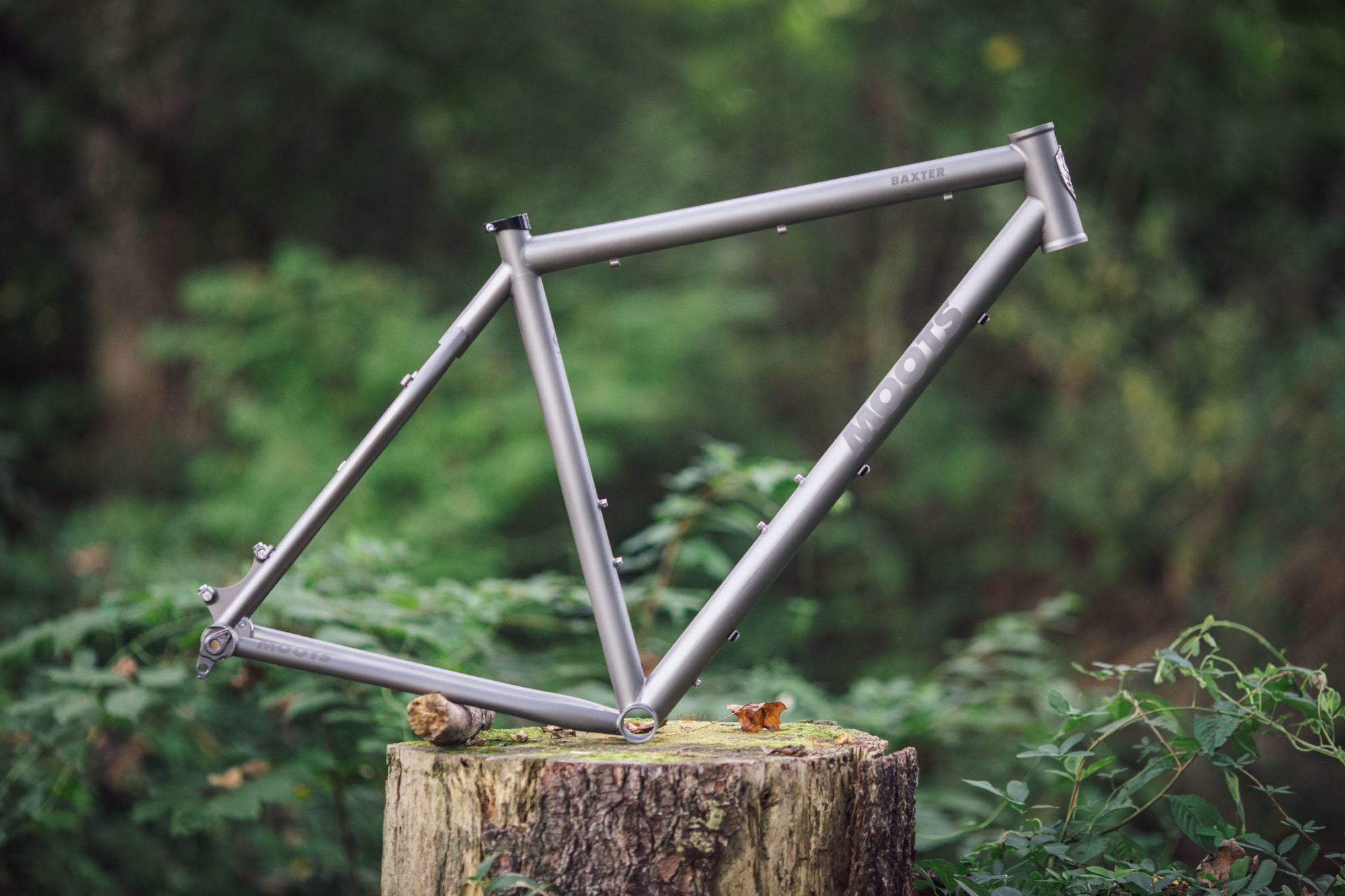
Environmental Impact
Lastly, and this is something we should expand on in a separate and more well-researched piece, there’s the topic of environmental impact. Comparing steel and titanium, everything I’ve read and heard points to titanium tubing having a significantly higher total carbon footprint than steel (and both being far preferable to carbon, but we’ll leave that aside). A widely cited 2022 study from British tubing manufacturer Reynolds found that producing a ferrous steel tube emits a total of 2.15 kilograms of CO₂, whereas the same tube made from titanium emits 6.74 kilograms of CO₂, meaning their Ti has roughly three times the footprint of ferrous steel.

With that said, your choice of frame material for a bike you’ll pedal for years is highly unlikely to be your most consequential decision regarding your carbon footprint. According to a presentation by Reynolds at the Bespoked bike show in England earlier this year, making the tubes for a single steel bicycle frame creates the same amount of CO₂ as driving a Range Rover a mere 32 miles. Regardless of how precise that figure is, it’s safe to say that the choice between steel and titanium becomes trivial if you’re constantly driving to the trailhead or flying around the globe with your bike. If your goal is to choose the frame material that’s less bad for the planet, steel seems to have the edge, but what you do with your bike is ultimately far more impactful over the course of your time with it.
IN SUMMARY
To wrap things up, I’ll return to the cost-benefit analysis I said I wasn’t going to do. Considering the various factors outlined above, I’d say they tip the scales in the direction of titanium not being worthwhile from a purely rational point of view. It’s largely unaffordable for most of us, probably more prone to cracking than steel, and a little worse for the environment. But we’re not always rational, are we?
You might have read this far and yet still want a Ti frame for any number of reasons. Perhaps it’s the timeless aesthetic, low weight, a connection with a particular builder, corrosion resistance, or status associated with riding space metal. Maybe owning a Ti bike is something you’ve been dreaming of and saving for, and if having one will bring you joy without jeopardizing your finances, I’d struggle to find any compelling reason why you absolutely shouldn’t go for it. Or maybe it’s something harder to explain. The heart wants what the heart wants. Titanium bikes have a coolness about them, and while any difference between quality steel and Ti is doubtful to be completely transformative, it can be the icing on the cake for a bike made with thoughtfully selected tubing and geometry that works for you.
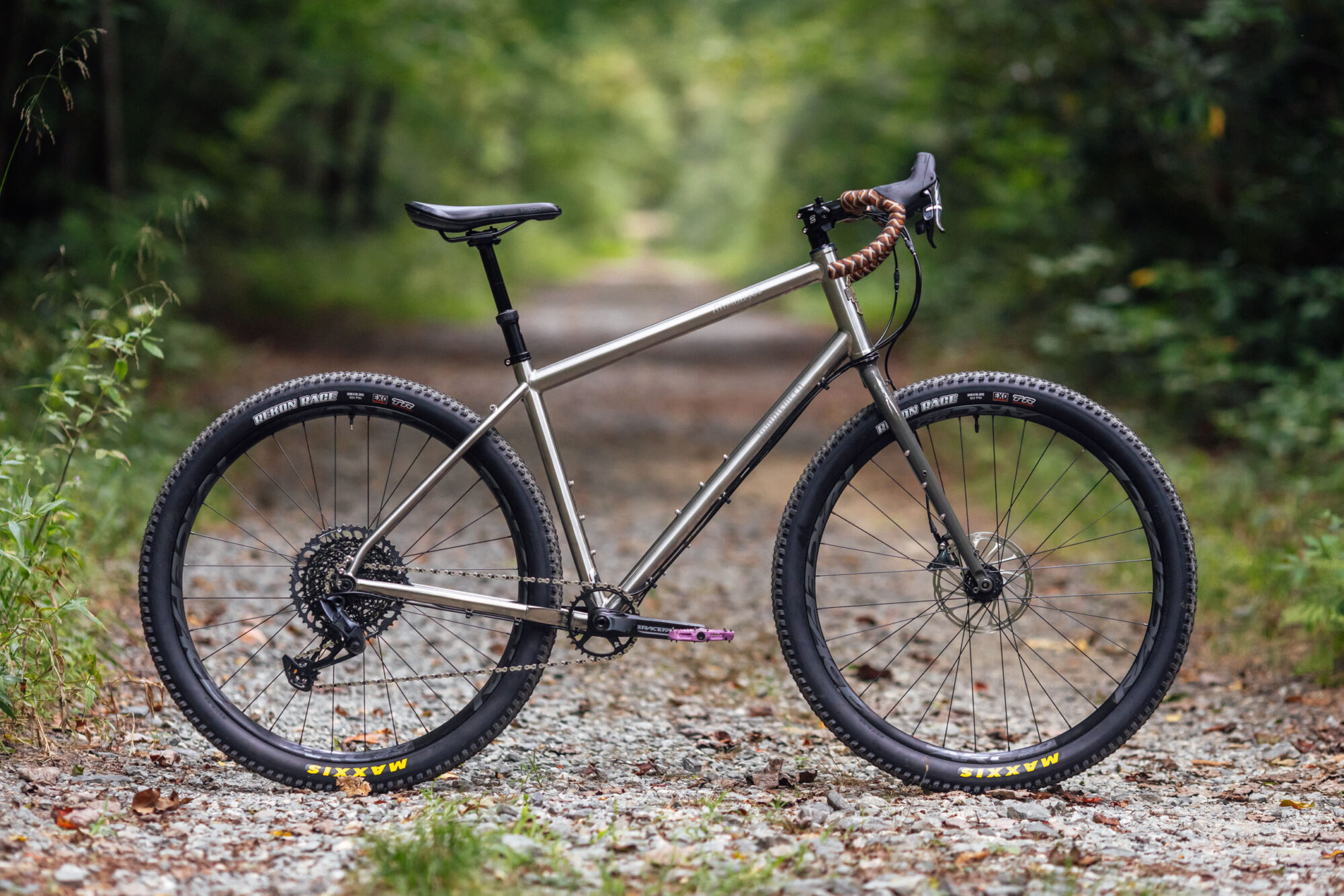
For my part, silencing my overly analytical side for a moment, I can still see the allure, too. There’s something undeniably attractive about the promise of a light and strong metal bike that looks better the more you use it, stands out in a crowd, and encourages you to explore the subtleties of its ride quality, be they real or imagined. Still, I can’t help but think about a parallel universe where the lore behind an alternate material took off a couple of decades ago instead—let’s say Scandium or Magnesium—and that’s the material of dreams everyone wants to have and is willing to pay a hefty premium for. To me, that framing helps close the perception-to-reality gap when it comes to our collective fascination with titanium.
If pressed, I would comfortably choose to buy the steel version of a bike over its Ti equivalent and invest the difference elsewhere (whether on bike upgrades or bills), knowing the inclination toward titanium may well rear its head again, inexplicable and unrealistic as it may be.
What did I miss or get wrong? Do any specific points above match or differ from your experience or perception? Why do you feel drawn to or repelled by titanium bikes? As always, I’d love to hear from you below!
Please keep the conversation civil, constructive, and inclusive, or your comment will be removed.








